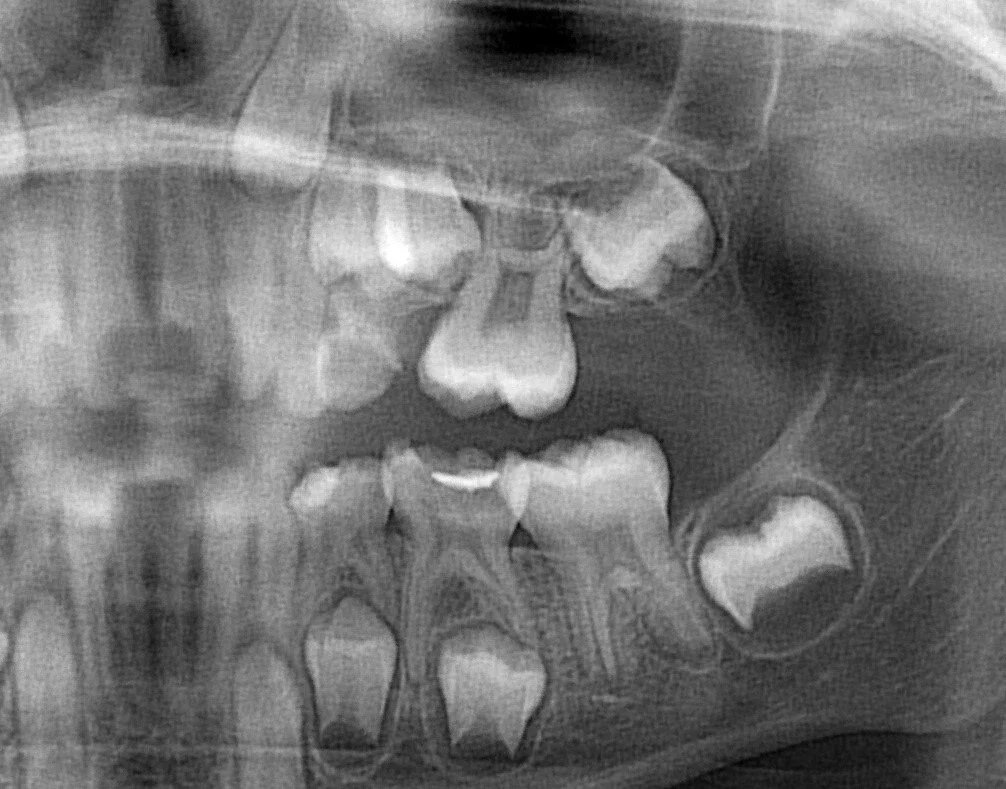Why Should We Treat Primary Teeth With Dental Caries?
Many of us in the dental profession have heard comments such as; why bother saving the baby teeth they will just fall out soon, or, don’t worry about fixing it well, it will fall out soon anyway. This post will address some of the many reasons why we should treat primary teeth with cavities. Although the way in which we treat carious lesions is constantly evolving, for example; further emphasis on prevention and arresting non-cavitated lesion development, the reasons for treating them are still important.
An All Too Common Appearance - Is This Worth Treating?
In this post, we will only address the consequences of not treating primary tooth decay. In later posts, we will also review the restorative materials that are more successful in primary teeth and the situations you should use them in.
Bullying
Bullying of children in schools is sadly very common and is increasingly difficult to control in the era of hyper-connectivity and an aesthetic driven society. Therefore, it is no surprise that untreated dental caries, particularly of the anterior dentition, is associated with increased bullying of children.(1)
Preventable Hospital Admissions
One of the primary reasons for preventable hospital admissions in Australia is dental caries. The most common age group to be admitted is children aged 5 – 9 years, with children aged 0 – 4 years following closely behind. As a combination, these two age groups made up around one-third of all preventable hospital admissions, with more than 22,000 children in the 2016 – 2017 year alone admitted to hospital for dental caries.(2) Furthermore, many children’s hospitals around the world are finding that these rates are increasing dramatically, by up to 50% over 10 years.(3)
A common presentation to Children’s Hospitals across Australia.
Occlusal Development
Early loss of a primary tooth, particularly a molar, is a common occurrence with the overwhelming reason being from dental caries. There is a substantial body of evidence that supports early extraction of a primary molar tooth increases the frequency of at least one feature of malocclusion, and increases the frequency of crowding in the permanent dentition.(4, 5) The best space maintainer is a primary tooth, consequently we should aim at restoring cavitated carious teeth with an appropriate material to help prolong their survival until exfoliation.
Space Loss in Quadrant 2 from early loss of the 64 and 65
Dental Development
Healthy primary teeth are crucial to the normal development of the permanent dentition. There are many complex interactions between the environment (systemic and local) and genetic make-up of an individual that will determine the health of their permanent teeth. So, it comes as no real surprise that infection can permanently damage the successor tooth. This can include; hypoplasia, hypomineralisation, cessation of tooth development, ectopic eruption and impaction. Although uncommon, this is one of the principal reasons for treating primary teeth appropriately.(6)
Permanent damage to the development of the successor from a long-standing infection in the primary tooth. Termed a ‘Turner Tooth’
Quality of Life
The presence of dental caries is associated with pain, difficulty eating, interrupted sleeping patterns and can affect a child’s ability to focus, learn and play. Overall, it can negatively impact a child’s normal growth and development. Children that have, or are, experiencing dental pain are known to take more time off school. Furthermore, if they require invasive treatments such as extractions or comprehensive dental care under general anaesthesia, the child and parent(s) will miss multiple days of school or activities.(7, 8)
Summary
As you can see, there are many good reasons to treat primary teeth. Additionally, as dental caries rates are close to 1-in-2 for children under 5 years of age, the longevity of any work you perform must be considered. For example, if a 3-year-old has decay in a primary E, any treatment you provide should be expected to last for 9 years. We will cover this topic in later posts, however, we hope this summary can help you to educate your patients and their parents. If you want an information sheet that we provide to parents, please subscribe above.
As always, all the best
Sarah and Tim




